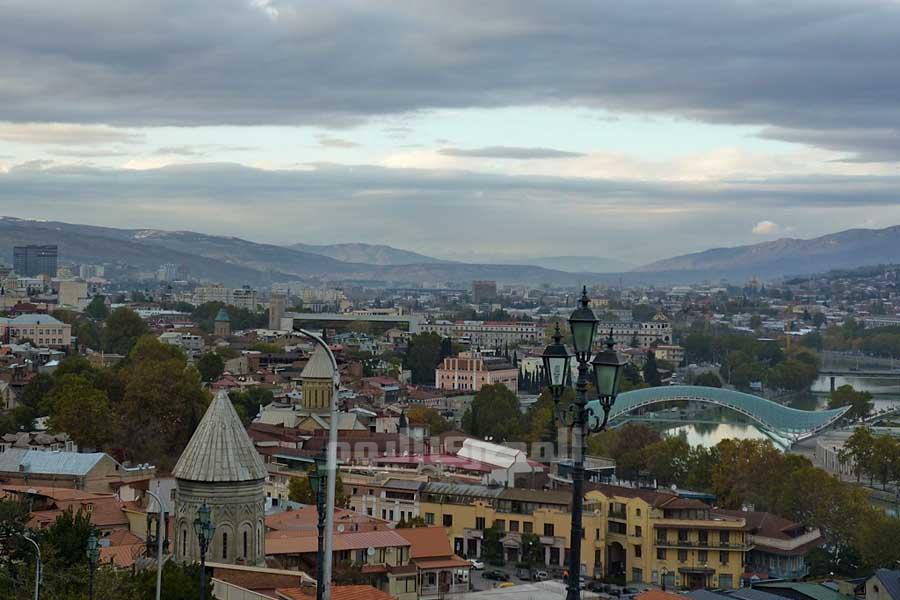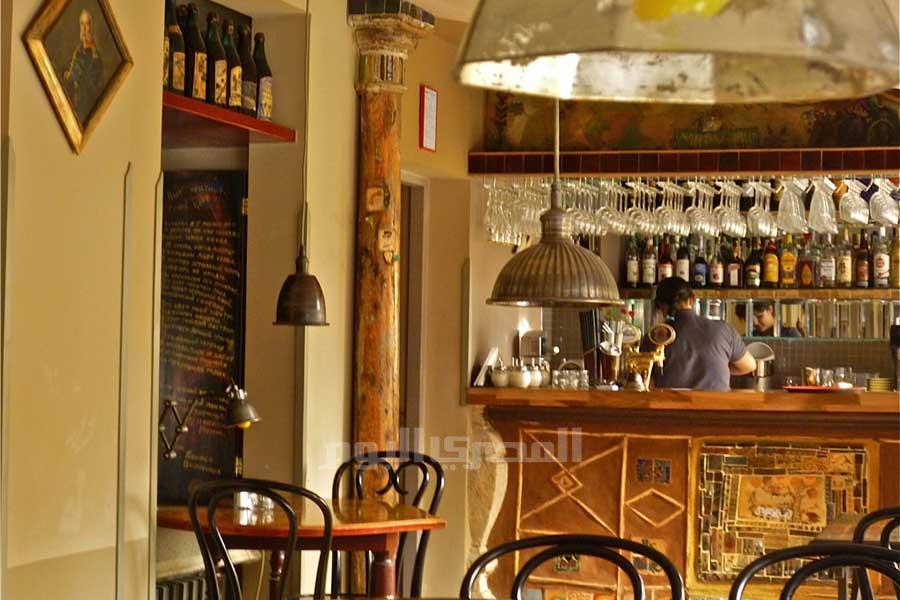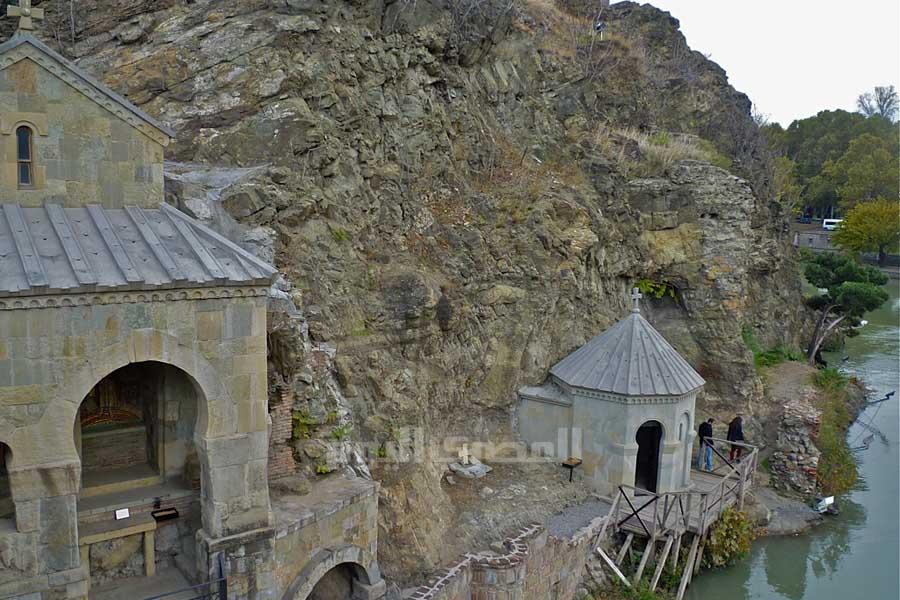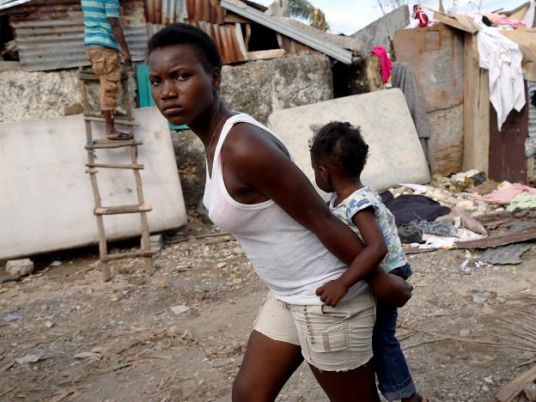
Cheerful border officials, translucent police stations, and requisite vodka shots were our introduction to Georgia — an emergent Eastern European nation with its sights set on the West. Having traveled from Kars to the Posof border, we awaited the Georgian visa machine to print its first sticker inside a new building where workers were still coating the walls a brilliant Georgian flag-red. Iranian 16-wheelers rumbled past, trekking through the countries that have yet to sanction the Islamic Republic. Finally stamped, we caught a ride on a lone microbus. The snowy terrain of Turkey seemed to thaw before our eyes into a Swiss landscape of green hills and winding rivers.
On the road to Tbilisi, it is difficult to miss the glass police stations in each town. The symbol of Georgia’s sweeping program of police reform, they embody transparency. President Mikhail Saakashvili, who took the reigns of government on a mandate of ridding the country of corruption, fired the entire traffic police force in 2005 — roughly 30,000 officers. Fresh recruits replaced them, and the once loathed police are now a courteous, professional institution.
Having boarded a Russian-techno filled bus in Akhaltsikhe, we arrived at a frenetic Tbilisi bus station, where local route names were written in Georgian. Suddenly illiterate and very hungry, we walked towards a glowing restaurant window. Inside the warehouse-looking room was a stocked liquor shelf and counter of prepared foods. As we dipped hot baguettes into the hearty, ambiguous stew, two men sitting in a haze of smoke — seemingly there since the morning — insisted we toast with them. Two vodka shots and four gifts of salty fish later, the gritty welcoming committee seemed pleased with their work.
One was dexterous enough to motion us to the metro station, where we found ourselves transported back to ambitiously modern Georgia. Teens in tailored coats and leggings directed us to purchase our new metro cards, and with that we rode to Freedom Square, the site of the Rose Revolution and the demonstrations for Georgia’s independence from the Soviet Union.
Passing a government building with an expectant EU flag, we headed up polished stone steps to the home of our Couchsurfing host, Evi. Entering through a long foyer, we found ourselves inside a configuration of balconied apartments forming a horseshoe of security around a communal garden. Surely well-tended in its day, the courtyard now contained crumbling statues and zigzagging clotheslines of frozen shirts. Evi’s apartment, a drafty expanse of faded wallpaper and Russian kitsch, nonetheless maintained a faded grandeur.
Our hostess wasted no time in leashing her small dog and guiding us to a nearby restaurant where we feasted on khinkali— steamed meat and broth filled dumplings, consumed by gripping doughy handles and slurping through small bites.
We continued our evening at Pur Pur, a historic mansion turned lounge, which plays host to Tbilisi’s youth, artists and intelligentsia. Groups gather to take in live jazz, rock and experimental music four nights a week in the cavernous brick basement. Others dine or sip Georgian wine in the fanciful main room. The charm is the romantic, eclectic atmosphere; tables are adorned with floral cloth and vases of wildflowers. Paper and ornate fabric-covered lamps are suspended from tall ceilings, emitting warm light against the brick walls.
Georgian wine may be ordered from a bottle or the decanter — supposedly a less predictable glass. An ancient tradition in the country, even modern Tbilisi residents keep homemade wine stored in clay vessels underground. It is difficult to go wrong with any choice, but the semi-dry red Saparavi is exquisite.
Table conversation turned to the old Caucasian practice of kidnapping brides, and to our surprise, Natia said, “I think it’s romantic.” She elaborated that in olden times, couples whose parents did not approve of their union would themselves arrange for the fiancée’s kidnap. In gleeful sarcasm, Natia said a bridenapping alone would save her from a bachelorette life. Commenting on modern Georgia, she noted that while society remains conservative, her circle of friends moved out of their parents’ houses post-graduation.
Old Tbilisi
The next morning we wandered the old city, or Kala. Its unpredictable cobblestone streets weave visitors beneath carved wooden balconies floating over narrow passages. The district is a poster child of what historical preservation can do for the vitality of a city. Today it is home to restaurants, upscale boutiques, and galleries — not a KFC or chain store in sight.
We treated ourselves to lunch at the quirky, polished Café Gabriadze, feasting on local cheese and kelekosh, a yogurt, rice and mint soup. A master puppeteer’s bohemian creation, the restaurant features a whimsical decorations ranging from mosaics to clever lighting fixtures constructed from assorted industrial materials. We sat against a windowed wall, with tiny latched doors providing an outlet for cigarette smoking — a habit of young women and men alike.
The restaurant stood adjacent to a stone building turned Anglophile pub, and the oldest church in the city, the Anchiskhati Basilica. Passing through an ornate bronze door, visitors enter a candlelit church covered in 17th century paintings and mini shrines, notably to Queen Tamar, who presided over Georgia’s golden age. Not one to be trifled with, Tamar expelled her first husband upon learning of his coup plot against her.
Natia led us to café-dotted Chardin Street; on warmer nights, tables and chairs spill across narrow passage. Nearby Bambis Rigi Street — the central artery of the bar district — is marked by the bronze ‘Tamada’ (toast-maker), who holds a horn of wine, calling for the start of merrymaking.
Raids and religion
Winding through Tbilisi is the emerald green Kura River, draped by bridges connecting the left and right banks. The newest Bridge of Peace is a wide pedestrian crossing, covered in a blanket of translucent sea green glass, with a large public park in its center.
Leaving the left bank, we crossed the elegant Metekhhi Bridge to hike the church of the same name atop the cliff. An equestrian statue of King Vakhtang surveys the mountain-hugged city from above.
On the lower cliff jutting over the river, is a small chapel dedicated to Abo Tbilisi — the patron saint of the city. Originally from Baghdad, Abo Tbilisi converted from Islam to Christianity and began to profess his new faith in the Emirate of Tbilisi (at the time, ruled from Baghdad). The local emir ordered him executed in 786, and his body was burned and thrown into the Kura River, in vain hopes of preventing his reverence as a martyr.
The towering Narikala Fortress encapsulates the small nation’s history. During invasions, the Georgians sheltered inside, preserved for long periods due to secret passages, used to replenish supplies. The picturesque capital was invaded not only by the Arabs — whose Emirate of Tbilisi lasted nearly four centuries — but the Romans, Persians, Ottomans, Mongols and Russians.
Like Kars and Ani, Tbilisi is a crossroads of empires; unlike the previous two, it finally came to rest in the hands of its founders. High above the city stands the Kartlis Deda, or ‘Mother Georgia’ statue, built to commemorate the 1500th anniversary of the city; in her left hand she holds a cup of win to greet allies — in her right, a sword to greet her enemies.
In modern times, the Christian nation counts pro-Western Azerbaijan and Turkey among its closest allies. Conversely, Russian culture, an unwanted reminder of Soviet dominance and the recent war, is being stamped out by Georgia’s leaders. Relations with Christian Armenia are more complex. As Natia aptly explained, “We are competitors.” Nevertheless, Tbilisi is home to a historic Armenian community, and relations with Yerevan are cordial.
That evening, we ventured to the ancient row of domed sulfur bathhouses, the legendary reason for the city’s foundation. While the smell of eggs permeates, the cleansing ritual leaves the visitor squeaky clean. Further uphill stands Tbilisi’s Shia mosque; as the sole Muslim place of worship, it hosts Sunni and Shia alike. The rest of the city’s mosques, along with twelve Armenian churches, were destroyed during the Soviet anti-religion purges of the 1930s.
Today, Tbilisi projects an image of tolerance. Earlier, Natia brought us to a café accessed by entering the outdoor gates of a synagogue, the worshippers seemingly unbothered by the flow of patrons. There were no guards present there, or at any other religious building in the city.
Our last morning, we met Natia at a local chain, Machakhela, for khachapuri, a canoe of kiln-fired bread enveloping an egg and chunk of warm butter. Glancing around the room, she speculated that any couple present had probably met the evening before. Three kilos heavier, we left for the bus station, ready to take on our next destination.





